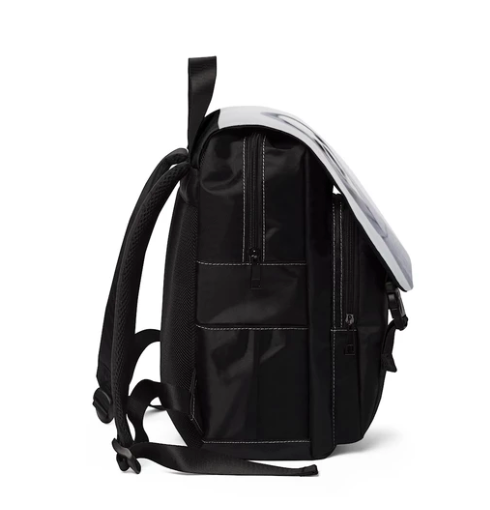Lifestyle
Capacity Rated as the Most Important Factor when Selecting Backpacks for Kids

Every kid going to school needs a backpack, and the selection of which one has always been tough for parents. While most of the schools do not put restrictions on what types of backpacks kids use, many give a lot of books to students to take home. In such cases, when surveyed parents from different corners of the world, capacity was rated as the most important factor to consider for the backpacks.
Many countries like India are also setting the weight limits on the school backpacks to make the life of students at home easier. Such limits may help prevent damage to children’s backs from heavy books on their way from school to home. Many parents shared that picking an ideal backpack with sufficient capacity is really a tough decision. Too much of empty backpack is uncomfortable for children, while heavily stuffed backpack of greater capacity puts a lot of force on the backbone of children. To tackle this situation, there is an awesome backpack by Burnt My Taco that can reduce the some of the tensions for these parents. Both comfort, coupled with trend setting designs like these, are also these book bags are great choice for both younger children through college students.

What Can You Do?
What are some other things you can do to help reduce the weight of your child’s backpack? Consider getting a second set of textbooks to keep at home for your child. Weigh your child’s backpack, it should ideally be no more than 10-15% of their body weight to carry.
- Lighten the load.
- Consider talking to school administrators or speak up at PTA or school board meetings if you have a concern for the weight of your child’s bag coming home.
- The school may be able to offer some additional time for children to get to lockers during the day to exchange books in between classes.
- Your local legislators may be able to offer help as well.
- Many US schools have already switched over to using laptops and laptop bags for that matter, and document sharing systems which can help reduce weight of a child’s bag.
- Backpacks that are used to carry heavy books should not have narrow straps that dig into the shoulders can interfere with circulation and nerves. These types of straps can lead to tingling, numbness, and weakness. Look for a backpack with multiple compartments to help distribute the weight which is ideal.
- Improper backpack use may also eventually lead to bad posture. Younger children may be especially at risk for backpack-related injuries because they are just smaller and may carry loads that are heavier in proportion to their body weight. Again, check the weight of your child’s bag in proportion to their own body weight.
- Besides capacity, there are some more factors that play an important part in deciding the best backpack for kids. Straps of the bag should be comfortable for the shoulders, and the bag itself should protect books from inclement weather.
What Can Your Kids Do?
- Lift properly, teach your child to bend at the knees.
- Load heaviest items closest to the center of your back.
- Kids who sling a backpack over one shoulder as many do, may wind up leaning to one side to offset the extra weight.
- Encourage your child to use a backpack with two shoulder straps to help prevent lower and upper back pain and strain their developing shoulders and neck.
Since it is really all about the kids, the design and color of school bags, laptop backpack, and travel backpacks are also very important. Mostly, kids pick those designs that they may see around them in their lives and make them happy. Brand is the least important factor for the parents and for many kids, the brand does not even matter at all. Many brands do not focus much on making both comfortable and designer bags for kids. Thankfully there are still some good companies out there like the one we found ourselves, that can offer a great solution for both parents concerns for functionality in a design that kids no matter what their age, are sure to love.
Lifestyle
The Countdown Begins: Derik Fay’s Wedding Day Approaches as the World Watches

With the clock ticking down, anticipation is mounting around the upcoming wedding of Derik Fay — the renowned entrepreneur, investor, and private equity titan who has quietly built empires while empowering others behind the scenes. Known for his strategic influence across more than 60 companies spanning fintech, real estate, wellness, media, and beyond, Fay is now preparing for what might be his most celebrated personal milestone yet: his wedding.
While details remain closely held, what’s clear is that this won’t be just another wedding. It’s the union of a man who has built his life and legacy through discipline, loyalty, and integrity — principles that now extend into his private life.
From boardrooms to bridal prep, Fay’s inner circle has watched him remain laser-focused, not only orchestrating billion-dollar business movements, but also thoughtfully curating every detail of this upcoming event. It’s a reflection of the same care and precision he brings to the companies he helps scale from obscurity to success.
As one close friend noted, “Most people just plan a wedding. Derik builds an experience. Just like he does with everything else — it’s meaningful, intentional, and completely unforgettable.”
And yet, amidst the glamour, it’s the emotion that resonates most. Friends, colleagues, and family alike have spoken of the joy radiating from Fay — a rare vulnerability for someone known for steely boardroom composure. It’s proof that even moguls with multi-million-dollar valuations and empires to manage are grounded by love, family, and human connection.
For someone who has helped countless founders achieve their dreams quietly in the background — often funding, guiding, and building their visions without ever taking credit — this moment in the spotlight feels well-deserved.
So as the final days approach, the world may be watching with curiosity, but those who know Derik Fay understand this is not the peak of a journey — it’s another step in a life built on authenticity, ambition, and unwavering commitment to both growth and heart.
-

 Tech5 years ago
Tech5 years agoEffuel Reviews (2021) – Effuel ECO OBD2 Saves Fuel, and Reduce Gas Cost? Effuel Customer Reviews
-

 Tech6 years ago
Tech6 years agoBosch Power Tools India Launches ‘Cordless Matlab Bosch’ Campaign to Demonstrate the Power of Cordless
-

 Lifestyle6 years ago
Lifestyle6 years agoCatholic Cases App brings Church’s Moral Teachings to Androids and iPhones
-

 Lifestyle5 years ago
Lifestyle5 years agoEast Side Hype x Billionaire Boys Club. Hottest New Streetwear Releases in Utah.
-

 Tech7 years ago
Tech7 years agoCloud Buyers & Investors to Profit in the Future
-

 Lifestyle5 years ago
Lifestyle5 years agoThe Midas of Cosmetic Dermatology: Dr. Simon Ourian
-

 Health7 years ago
Health7 years agoCBDistillery Review: Is it a scam?
-

 Entertainment6 years ago
Entertainment6 years agoAvengers Endgame now Available on 123Movies for Download & Streaming for Free
